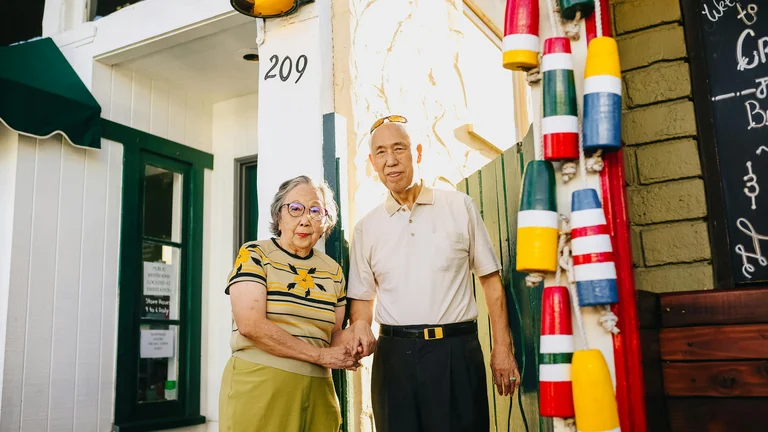Exploring the Allure of Fake Dating Tropes in K-Dramas

Fake dating has become one of the most beloved and frequently used tropes in Korean dramas, captivating audiences with its blend of charm, tension, and emotional depth. This trope involves two characters pretending to be romantically involved for external reasons, only to gradually develop genuine feelings. Its popularity in K-Dramas stems from the unique way it combines comedy, conflict, misunderstandings, and heartfelt moments, making it a versatile storytelling device that resonates strongly with viewers. Understanding the core reasons behind its appeal requires a deep dive into its psychological and narrative mechanisms.
At the heart of the fake dating trope lies the dynamic of opposites coming together under contrived circumstances. Often, the protagonists have conflicting personalities or motivations, and the facade of romance forces them into close proximity. This proximity generates natural tension, awkwardness, and unexpected vulnerabilities, which serve as fertile ground for character development. Many successful K-Dramas leverage these elements to create multi-layered narratives where the fake relationship acts as a catalyst for personal growth and emotional honesty.
Furthermore, the trope taps into universal desires for connection and understanding, allowing viewers to indulge in the fantasy of love blossoming in the most unlikely situations. It also satisfies narrative cravings for gradual romantic buildup, where chemistry evolves through shared experiences rather than instant attraction. Because the relationship begins as a controlled deception, it provides dramatic potential and suspense—will the feelings become real? Can they maintain the lie without hurting others? Such questions keep viewers deeply invested in the unfolding story.
In the context of Korean culture and drama storytelling traditions, fake dating stories often reflect social pressures around relationships, family expectations, and societal norms. Characters might pretend to date to appease family members, evade matchmaking pressures, or maintain social reputations. This cultural grounding adds authenticity and relatability to the trope, making it distinct from similar scenarios in Western media. The faux romance becomes a lens through which issues of identity, tradition, and personal freedom are thoughtfully explored.
Because of these rich narrative possibilities, the trope manifests in various forms across K-Drama genres—romantic comedies, melodramas, workplace romances, and even fantasy series. Each variation offers unique twists that prevent the trope from becoming stale, maintaining its freshness and appeal to diverse audiences. Below, we will dissect the best and most compelling fake dating tropes found in K-Dramas, illustrating their narrative function, typical characteristics, and key examples.
Common Variations of Fake Dating Tropes in K-Dramas
The fake dating premise is rarely a monolithic concept; it branches into multiple notable variations, each giving the basic idea a new spin, context, or emotional tone. Understanding these categories helps appreciate how K-Dramas innovate within the trope and why they continue to captivate audiences globally.
1. Contract Relationships
One of the most prevalent forms involves characters entering a contractual agreement to pretend to be a couple for a specific purpose or time frame. The contract might be verbal or written, often accompanied by stipulated rules or conditions. This variation emphasizes negotiation, boundaries, and initial emotional detachment, setting the stage for gradual warming and conflict when real feelings start invading the arrangement.
These contracts can range from lighthearted deals—such as attending an event as a couple—to more complex arrangements, sometimes involving financial or reputational stakes. The tension arising from trying to maintain professionalism or distance while faking intimacy generates frequent comedic and touching moments.
2. Family or Social Pressure Pretenses
In many K-Dramas, fake dating is born out of the need to satisfy family expectations or societal demands. Characters might pretend to be engaged or dating to avoid meddlesome relatives, protect family honor, or meet social obligations. This variation often brings additional layers of emotional complexity as the characters juggle genuine feelings with social facades, all while navigating the burdens imposed by their families or communities.
This trope variation enables strong commentary on the cultural significance of marriage and dating within Korean society. It also allows for poignant exploration of generational conflicts and the pressure to conform versus individual desires.
3. Workplace or Rivalry Contexts
Fake dating in the workplace or between rivals introduces professional stakes and competitive dynamics to the trope. Characters working in the same company or industry may fake a relationship for career strategy, personal advantage, or to influence stakeholders. This setup creates a fertile ground for tension arising from the clash between work ethics and personal feelings, as well as power dynamics between characters.
Rivalry adds a compelling edge, as characters who initially dislike or distrust each other engage in pretend romance, eventually discovering hidden facets that prompt emotional change. This version is especially popular in K-Dramas combining romantic threads with corporate intrigue or thriller elements.
4. Celebrity or Public Image Fake Dating
In dramas focused on celebrities or public figures, fake dating often emerges as a tactic to manipulate public perception, media narratives, or fan expectations. Characters may stage a relationship to quell rumors, boost popularity, or counteract negative publicity. This form provides insight into the pressures facing public figures and the impact of fame on personal relationships, cast against the backdrop of glamor and spectacle.
Such storylines explore the conflict between private desires and public personas, highlighting vulnerability beneath polished images. It also accentuates themes of trust, privacy, and authenticity within high-pressure environments.
Key Elements Driving the Success of Fake Dating Tropes
Regardless of the variation, certain narrative and emotional elements consistently contribute to the effectiveness of fake dating stories in K-Dramas. Recognizing these can help viewers and writers appreciate why this trope resonates strongly and how it achieves a balance of entertainment and emotional depth.
Emotional Proximity and Forced Intimacy
The core tension in fake dating arises from characters being compelled to act intimately without a foundation of genuine romance. This forced closeness leads to moments of awkwardness, embarrassment, and vulnerability that humanize the characters and break down their emotional defenses. It allows for gradual bonding, with small gestures gaining significance and providing authentic emotional payoffs.
Slow-Burn Romantic Development
Fake dating stories often unfold slowly, allowing feelings to emerge implicitly or explicitly over time. The deliberate pace permits nuanced exploration of emotions, misunderstandings, and personal growth rather than immediate love declarations. This slow burn intensifies anticipation, making the eventual romantic resolution more satisfying.
External Conflicts and Stakes
By situating the fake relationship within external pressures—such as families, workplaces, or social circles—the story benefits from multiple layers of conflict. Characters must navigate not only their feelings but also the demands and consequences imposed by others. These tensions complicate the plot, providing sustained engagement and dramatic twists.
Individual Character Arcs
Fake dating narratives do not merely hinge on romance but also often serve as vehicles for character transformation. Through the pretense, characters confront personal insecurities, reconcile with their pasts, or challenge societal norms. This deeper journey elevates the trope beyond superficial romance, adding resonance and meaning.
Table: Comparison of Fake Dating Trope Variations in K-Dramas
| Variation | Main Purpose | Typical Setting | Emotional Dynamics | Notable Examples |
|---|---|---|---|---|
| Contract Relationships | Fulfill short-term goals through formal agreements | Everyday life, social events, family gatherings | Negotiation, gradual warmth, conflict over rules | "She Was Pretty", "What's Wrong With Secretary Kim" |
| Family or Social Pressure Pretenses | Meet family or societal expectations | Home, family events, community spaces | Conflicted loyalty, hidden affection, societal tension | "My Secret Romance", "Marriage, Not Dating" |
| Workplace or Rivalry Contexts | Gain professional advantage or resolve rivalry | Office, corporate events, business meetings | Tension, power play, reluctant affection | "Jugglers", "Touch Your Heart" |
| Celebrity or Public Image | Manipulate public opinion or media | Entertainment industry, press conferences, fan events | Hidden vulnerability, facade vs reality | "Legend of the Blue Sea", "The Secret Life of My Secretary" |
Popular K-Dramas Featuring the Best Fake Dating Tropes
Examining acclaimed K-Dramas that employ fake dating tropes offers insight into the breadth of storytelling strategies and character interactions. These dramas demonstrate the trope’s versatility and its ability to adapt to different narrative styles while maintaining core emotional appeal.
1. "She Was Pretty"
This drama exemplifies the contract relationship trope. Two former childhood acquaintances reunite after many years, agreeing to maintain a façade of a perfect couple amid workplace pressures. Their initially contrived relationship evolves as they rediscover their true selves and learn to trust each other. The series skillfully balances comedic misunderstandings with tender moments, highlighting how fake dating can foster healing and growth.
2. "Marriage, Not Dating"
Focused on family pressures, this drama features a protagonist trying to avoid forced marriages by hiring a fake girlfriend who herself has ulterior motives. The fake dating arrangement exposes familial expectations and social stigmas around marriage, driving both comedic situations and deeper reflections on love and freedom.
3. "What's Wrong With Secretary Kim"
Combining workplace rivalry and contract relationship elements, this drama centers on a perfectionist boss and his capable secretary who stages a fake dating scenario to navigate their complicated relationship. The story explores power dynamics, misunderstandings, and gradually unfolding affection, showcasing the trope’s adaptability to modern office settings.
4. "Touch Your Heart"
Using the workplace and contract scenarios, the female lead impersonates a lawyer and enters a fake relationship with a prosecutor to advance her career. The drama explores themes of identity, trust, and personal ambition, adding layers to the fake dating convention by integrating suspense and professional ethics.
Step-by-Step Guide to Writing a Compelling Fake Dating K-Drama Plot
For creators aiming to craft a believable and engrossing fake dating narrative in K-Drama style, several narrative steps ensure the trope hits the right emotional marks while avoiding clichés. This guide outlines key structural elements to incorporate nuanced storytelling.
- Establish Clear Motivations: Define why the characters enter the fake relationship. The motives should be realistic and relatable, ranging from family pressure, business strategy, or social convenience.
- Highlight Character Contrasts: Present protagonists with distinct personalities, values, or backgrounds. These differences create initial conflict and narrative interest, heightening the impact of their growing connection.
- Set Explicit Rules or Conditions: Introduce boundaries within the fake dating arrangement. Characters should agree on what is allowed and forbidden to create suspension and tension when these rules are tested.
- Build Forced Interaction Scenes: Design moments where characters must spend time together, such as events, trips, or cohabitation. These scenes deepen intimacy and reveal hidden traits.
- Integrate External Obstacles: Add family, friend, or social pressures that complicate the façade. These obstacles increase stakes and emotional depth.
- Slowly Unveil Genuine Emotions: Show subtle changes in attitudes, body language, and dialogue that hint at real feelings developing beneath the surface.
- Include Misunderstandings and Conflicts: Use miscommunication or jealousy to maintain drama and keep viewers engaged.
- Resolve with Honest Confession: Allow characters to confront their feelings openly, deciding whether to continue the relationship genuinely or part ways.
List: Essential Features for Memorable Fake Dating K-Drama Couples
- Natural Chemistry Despite Initial Differences
- Balanced Power Dynamics with Opportunity for Growth
- Clear and Compelling Motivations for Faking the Relationship
- Gradual Emotional Development Reflecting Realistic Changes
- Humorous and Awkward Situations that Build Relatability
- Strong Supporting Characters Who Challenge or Support the Couple
- Meaningful External Conflicts to Heighten Tension
- Sincere Moments of Vulnerability Beyond the Facade
Psychological Impact of Fake Dating Tropes on Viewers
The fake dating trope’s enduring appeal is also linked to its psychological effects on viewers. Research in media psychology suggests that such storylines provide both escapism and emotional catharsis. Watching characters navigate complex emotions through a contrived romance mirrors the audience’s own experiences with vulnerability and trust, allowing identification and empathy.
Moreover, the trope satisfies cognitive pleasure derived from resolving uncertainty. Initially, the pretense creates ambiguity about characters’ true feelings, hooking viewers with suspense. As authenticity gradually surfaces, it delivers emotional gratification through narrative closure. This rise and fall of tension aligns with viewers’ need for satisfying story arcs.
Additionally, the allure of fake dating aligns with parasocial relationships where viewers form imagined bonds with characters. The gradual emotional development modeled in these stories provides a template for hopeful romantic scenarios and promotes positive emotions such as warmth and delight. Fan communities also thrive around discussing and speculating about couple dynamics, boosting engagement and cultural impact.
Incorporating Cultural Dimensions in Fake Dating K-Dramas
Korean fake dating stories often encapsulate deeper cultural meanings related to relationships, family, and societal values. The trope's proliferation can be traced to traditional Confucian influences shaping family-centric views and the balancing act between individual desires and communal expectations.
For instance, characters may fake relationships to comply with parental wishes, highlighting the centrality of filial piety. This dramatization allows exploration of generational tensions in relatable ways for global audiences. Moreover, the emphasis on reputation and social standing reflects contemporary concerns about urban living pressures and the evolving role of marriage in Korean society.
These cultural layers enrich the trope beyond romantic comedy, providing commentary on identity negotiations in modern Korea. International viewers gain insight into these norms through engaging storytelling, fostering cross-cultural understanding and appreciation.
Challenges and Criticisms of the Fake Dating Trope
While beloved, the trope is not without its challenges and critiques. One common criticism is that it can perpetuate unrealistic expectations about romance and communication, especially when fake dating evolves too quickly into genuine love without addressing emotional boundaries thoroughly.
Some narratives risk reinforcing stereotypes, such as gender roles or social hierarchies, by defaulting to common character archetypes like the cold male lead and warm female protagonist. Additionally, the trope’s reliance on deception, even if benign, may raise ethical concerns about trust and honesty in relationships.
Writers and producers face the challenge of maintaining freshness within a widely used trope and avoiding formulaic plots. To counter these issues, newer dramas experiment with subverting expectations—introducing more diverse characters, realistic pacing, and multidimensional conflicts.
Future Trends in Fake Dating Storytelling within K-Dramas
Looking ahead, the fake dating trope is likely to continue evolving with shifting societal norms and audience preferences. There is growing interest in featuring more nuanced portrayals of gender roles, including female leads with greater agency and male leads who express vulnerability in different ways.
Additionally, intersectional perspectives around class, culture, and identity may bring fresh angles to fake dating narratives. For example, dramas could explore fake relationships crossing social strata or involving characters facing marginalized experiences. This diversification would enrich storytelling depth and relevance.
Technological influences, like social media and dating apps, also open new possibilities for integrating digital culture into fake dating plots. Characters might simulate online relationships or navigate public scrutiny amplified by social platforms, adding contemporary tension. These trends highlight the trope’s adaptability to modern romantic contexts.
Overall, the fake dating trope’s balance between escapism and emotional resonance ensures it will remain a staple of K-Drama storytelling, embraced by both creators and fans worldwide.
FAQ - Best Fake Dating Tropes in K-Dramas
What exactly is the fake dating trope in K-Dramas?
The fake dating trope involves two characters pretending to be in a romantic relationship for external reasons, such as family pressure, social expectations, or personal gain. Over time, this pretense often leads to genuine affection and complex emotional development.
Why is fake dating so popular in K-Dramas?
Fake dating creates compelling narrative tension through forced proximity, conflicting motivations, and the gradual build-up of real feelings beneath a superficial facade. It resonates with cultural themes and offers a mix of humor, drama, and romance that appeals widely to viewers.
What are the common variations of fake dating stories in Korean dramas?
Common variations include contract relationships with formal agreements, fake dating to satisfy family and social pressures, workplace or rivalry-driven fake romances, and celebrity or public image-based fake relationships.
How do K-Dramas handle the transition from fake to real relationships?
Most dramas gradually reveal authentic emotions through shared experiences, vulnerability during forced interactions, and overcoming misunderstandings or external obstacles, culminating in honest confessions or decisions about their relationship.
Are there any criticisms of the fake dating trope?
Critiques often focus on unrealistic relationship dynamics, reinforcement of stereotypes, and ethical concerns about trust due to deception. Some viewers seek more nuanced portrayals and originality to avoid formulaic storytelling.
What cultural factors influence fake dating stories in K-Dramas?
Cultural values like filial piety, societal expectations for marriage, reputation concerns, and generational tensions play significant roles, adding depth and authenticity to fake dating narratives within Korean society.
Can the fake dating trope adapt to modern trends?
Yes, recent K-Dramas incorporate diverse characters, evolving gender roles, social media influence, and contemporary societal issues to keep the trope relevant and engaging for modern audiences.
Fake dating tropes in K-Dramas portray characters faking romantic relationships to navigate societal pressures or personal goals, gradually developing real feelings. This narrative device blends comedy, tension, and cultural depth, making it a compelling and enduring element shaping Korean drama storytelling.
The fake dating trope in K-Dramas remains a deeply versatile storytelling device enriched by cultural nuances and psychological complexity. Its ability to combine humor, romance, and conflict while exploring themes of identity, societal pressure, and personal growth ensures its lasting popularity. As the genre evolves, fake dating stories continue to offer fresh perspectives and emotional resonance that connect strongly with viewers worldwide.






